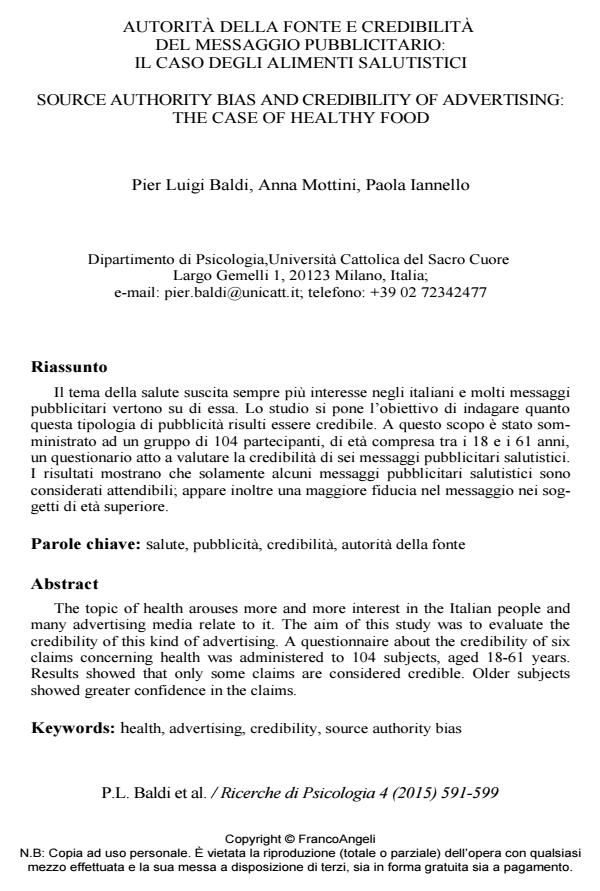Source authority bias and credibility of advertising: the case of healthy food
Journal title RICERCHE DI PSICOLOGIA
Author/s Pier Luigi Baldi, Anna Mottini, Paola Iannello
Publishing Year 2016 Issue 2015/4
Language Italian Pages 9 P. 591-599 File size 59 KB
DOI 10.3280/RIP2015-004001
DOI is like a bar code for intellectual property: to have more infomation
click here
Below, you can see the article first page
If you want to buy this article in PDF format, you can do it, following the instructions to buy download credits

FrancoAngeli is member of Publishers International Linking Association, Inc (PILA), a not-for-profit association which run the CrossRef service enabling links to and from online scholarly content.
The topic of health arouses more and more interest in the Italian people and many advertising media relate to it. The aim of this study was to evaluate the credibility of this kind of advertising. A questionnaire about the credibility of six claims concerning health was administered to 104 subjects, aged 18-61 years. Results showed that only some claims are considered credible. Older subjects showed greater confidence in the claims.
Keywords: Health, advertising, credibility, source authority bias
Pier Luigi Baldi, Anna Mottini, Paola Iannello, Autorità della fonte e credibilità del messaggio pubblicitario: il caso degli alimenti salutistici in "RICERCHE DI PSICOLOGIA " 4/2015, pp 591-599, DOI: 10.3280/RIP2015-004001